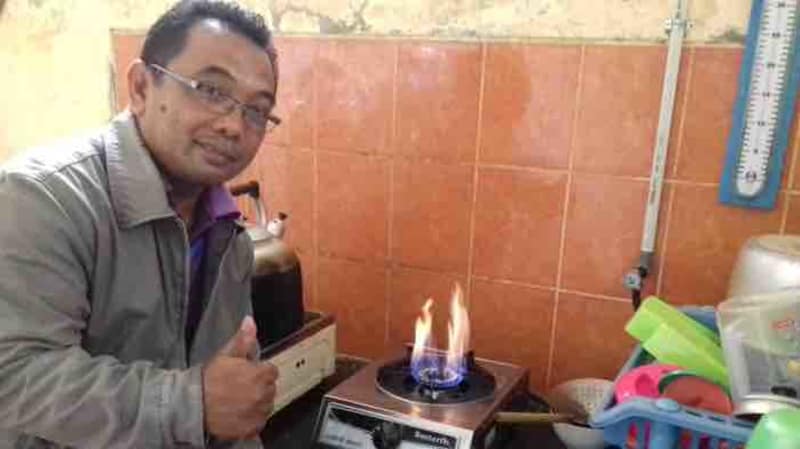
kumparan.com - By mentioning the word ‘dung,’ including animal dung, our mind focuses straight on unpleasant odor, something digusting, and something that shall be avoided. However, do we have to always avoid animal and human dungs due to their unpleasant odors and disgusting appearance? Definitely not!
Through technological development and the power of human creativity and innovation, animal and even human dung can be turned into something with high economic value. Animal dung can be more than just the source of energy but also the raw materials for fertilizers which helps the growth of the plants.
In the hand of Rumah Biru, a non-governmental organization with the head office in Jalan Pejaten Barat, South Jakarta with one of the branch offices in Klaten, Central Java, animal dungs such as cow, goat, water buffalo, chicken and even human, these raw materials can be converted into highe economic value. Through Domestic Biogas (BIRU) program, not only that Rumah Energy converts animal and human dungs into the source of renewable energy (biogas), but it also produces fertilizer (bio-slurry) which is capable to fertilize the soil and improve crop productivity.
The Provincial Coordinator of Rumah Energi Klaten, Cental Java, Wilhelmus Leang, said, the process of converting animal dung into biogas and fertilizer starts with the construction of a reactor or a type of cylindrical-shaped septic tank with a variety of capacity consecutively 4 m3, 6 m3, 8 m3, 10 m3, and 12 m3 depending on the production capacity of the animal dungs between 1.75 m2 and 2 m2. The dung is fed into the reactor through an inlet (a feature which mixes animal dung with water). Through the inlet pipe, mixture of animal dung and water is then further mixed, especially the cow dung, before further channeled into the reactor.
“Inside the reactor, the mixture of animal dung and water will undergo a fermentation process and produce gas. And in the reactor surface a dome (something tha resemble a rounded pot cover, ed.) is constructed in order to accommodate the gas produced before being distributed through the main pipeline. And from the valve and the main pipe line, gas is distributed to the user (in the kitchen) or for other purposes such as lighting (petromax),” William, the man from Larantuka, East Flores, East Nusa Tenggara, said.
According to William, the reactor construction process takes place between 7-13 days, excluding the earth excavation period. In the meantime, the cost of reactor construction highly varied depending on the material availability and cost. “Normal cost is between Rp 8 to Rp 13 millions,” according to William who has expanded his efforts to Flores Island, East Nusa Tenggara.
William, as Wilhelmus Leang is often called, admitted that among the number of dung available: pig, human, and quail dungs are the type of dungs that can easily produce energy and are capable of producing high quality organic fertilizers. In addition to its soft/mushy appearance, they are also liquefied. The feed of pig is varied, while cow dung is abit firm then it needs to be mixed before channeled into the reactor, while the cow fodder is mostly grass.
As of today, Ruman Energi has been operating in approximately 13 provinces throughout Indonesia. Through Rumah BIRU program, he wishes to convert animal dung into something with high economic value. This is also part of the effort to prevent the environmental contamination by waste products and animal dungs through the emission of unpleasant odor to the surrounding area. (red)
(Source: https://kumparan.com/tugujogja/mengubah-kotoran-hewan-jadi-sumber-energi-alternatif)


